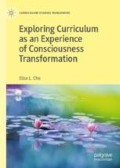Abstract
Human temporality is one of the most significant features of human existence. This chapter examines the concept of time and its relationship with the nature of human existence; it then goes on to explore Heidegger’s concept of authenticity in relation to the certainty of death. Given the fact that the upholding of the objective and impersonal knowledge of death, particularly the biomedical one, had hindered us from seeing death as it is, the existential significance of the subjective and experiential views of dying and death is emphasized. This chapter concludes that learning to appreciate human temporality can be understood as learning to appreciate the ultimate nature of human existence and learning to appreciate the present based on the reverence of human mortality and the right view that sees death as it really is.
Access this chapter
Tax calculation will be finalised at checkout
Purchases are for personal use only
Notes
- 1.
Dasein is a term used by Heidegger (1927/2010) to refer to the peculiar human way of being—with the fundamental structure being-in-the-world—whereby one is always already existing in a world.
- 2.
Successful practitioners of Pure Land Buddhism usually know (mostly being informed by Amitabha Buddha or Guanyin bodhisattva) the exact time of their death and prepare for it in advance. At the moment of death, the dying practitioner would inform those people who are on the scene of the advent of the Three Saints of the West (Amitabha Buddha, and bodhisattvas Avalokites´vara (Guanyin) and Maha¯stha¯mapra¯pta) who are going to escort this dying person to Amitabha Buddha’s Pure Land. After passing away, the facial expression of the dead practitioner is usually very peaceful, and their body remains extremely soft and flexible.
- 3.
Compiled and edited by Evans-Wentz (1927/2000), The Tibetan Book of the Dead: Or the After-Death Experiences on the Bardo Plane, According to Lama Kazi Dawa-Samdup’s English Rendering is one of the best-known English translations of the experiential teaching on death in Tibetan Buddhist literature.
References
Augustine, S. (1876). The Confessions of St. Augustine (J. G. Pilkington, trans.). Garden City, NY: International Collectors Library, American Headquarters. (Original work published 397). Retrieved from https://en.wikisource.org/wiki/The_Confessions_of_Saint_Augustine_(Pilkington)
Dreyfus, H., & Wrathall, M. (2005). Martin Heidegger: An Introduction to His Thought, Work, and Life. In H. Dreyfus & M. Wrathall (Eds.), A Companion to Heidegger (pp. 1–15). Malden, MA: Wiley-Blackwell.
Evans-Wentz, W. Y. (2000). The Tibetan Book of the Dead: Or the After-Death Experiences on the Bardo Plane, According to Lama Kazi Dawa-Samdup’s English Rendering. New York, NY: Oxford University Press. (Original work published 1927).
Greene, B. (2004). The Fabric of the Cosmos: Space, Time, and the Texture of Reality. New York, NY: Alfred A. Knopf.
Heidegger, M. (2010). Being and Time (J. Stambaugh, trans.). Albany, NY: State University of New York Press. (Original work published 1927).
Huebner, D. E. (1999a). Knowledge: An Instrument of Man. In V. Hillis (Ed.), The Lure of the Transcendent: Collected Essays by Dwayne E. Huebner (pp. 36–43). New York, NY: Routledge. (Reprinted from an unpublished manuscript 1962).
Huebner, D. E. (1999b). Curriculum as Concern for Man’s Temporality. In V. Hillis (Ed.), The Lure of the Transcendent: Collected Essays by Dwayne E. Huebner (pp. 131–142). New York, NY: Routledge. (Original work published 1967).
Huebner, D. E. (1999c). Religious Metaphors in the Language of Education. In V. Hillis (Ed.), The Lure of the Transcendent: Collected Essays by Dwayne E. Huebner (pp. 358–368). New York, NY: Routledge. (Original work published 1985a).
Huebner, D. E. (1999d). Spirituality and Knowing. In V. Hillis (Ed.), The Lure of the Transcendent: Collected Essays by Dwayne E. Huebner (pp. 340–352). New York, NY: Routledge. (Original work published 1985b).
Sopa, L. (2005). Steps on the Path to Enlightenment: A Commentary on Tsongkhapa’s Lamrim Chenmo. Volume II: Karma. Somerville, MA: Wisdom Publications.
Thompson, E. (2015). Waking, Dreaming, Being: Self and Consciousness in Neuroscience, Meditation, and Philosophy. New York, NY: Columbia University Press.
Author information
Authors and Affiliations
Rights and permissions
Copyright information
© 2019 The Author(s)
About this chapter
Cite this chapter
Chu, E.L. (2019). Learning to Appreciate Human Temporality. In: Exploring Curriculum as an Experience of Consciousness Transformation. Curriculum Studies Worldwide. Palgrave Macmillan, Cham. https://doi.org/10.1007/978-3-030-17701-0_6
Download citation
DOI: https://doi.org/10.1007/978-3-030-17701-0_6
Published:
Publisher Name: Palgrave Macmillan, Cham
Print ISBN: 978-3-030-17700-3
Online ISBN: 978-3-030-17701-0
eBook Packages: EducationEducation (R0)

